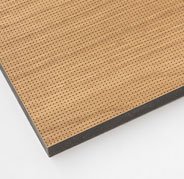Have you ever been in a room with terrible sound quality? Maybe the acoustics were off, or it was echoing too much. We’ve all experienced these acoustic issues at one point or another. But what if we could fix them? Ceiling acoustic treatment is the process of using various materials to absorb and/or deflect sounds to create an optimal listening experience. This can be done through ceilings, walls, floors, and other surfaces.
What is acoustic therapy?
It’s the process of adding materials to a room to improve sound quality. This can be done by adding absorption, diffusion, or both. Absorption materials absorb sound waves, while diffusion scatters them. The goal is to create a balance between the two so that sound waves are not bouncing around the room and cause echoes. This will make the room sound more clear and improve the overall listening experience.
The benefits
It’s an important aspect of any recording or performance space. There are many benefits to applying acoustic therapy to your ceilings. Ceiling acoustic treatment can improve the sound quality of your recordings, help reduce noise pollution and make your performance space more comfortable for both you and your audience.
They can improve the sound quality of your recordings by absorbing unwanted reflections and echoes. This can also help reduce noise pollution by blocking out unwanted sounds from outside the room. This will create a more relaxed environment where you can focus on your music without distractions. Finally, they can make your performance space more comfortable for both you and your audience. By reducing reverberation, they can reduce the fatigue that can come from standing in a large, live room for extended periods.
How to optimize your ceilings for sound quality?
If you’re looking to improve the sound quality in your area, optimizing your ceilings for acoustic treatment can make a big difference. When performing this, there are a few factors to bear in mind:
1. The type of ceiling material you have will make a difference in how effective acoustic therapy is. For example, drywall ceilings will absorb more sound than tile or wood ceilings.
2. The thickness of your ceiling also plays a role in sound quality. Thicker ceilings will help to reduce noise from outside sources, while thinner ceilings may allow more sound to pass through.
3. The height of your ceilings can also impact sound quality. Higher ceilings can help to create a sense of spaciousness and reduce reverberation, while lower ceilings may help to focus and intensify sound.
4. The shape of your ceiling also affects sound quality. Flat ceilings tend to reflect sound more than pitched or vaulted ceilings, which can help to disperse sound more evenly throughout a room.
Conclusion
It is an essential tool for optimizing sound quality in any room. By following the tips outlined here, you can equip your ceiling with acoustic therapy that will make your music and audio come alive. With proper installation and placement of panels, baffles, or other materials, you can create a space that offers perfect sound quality every time. Whether it is for mixing records or listening to music in peace – no matter what kind of sounds you want to hear – It’s a key to unlocking optimal audio performance.